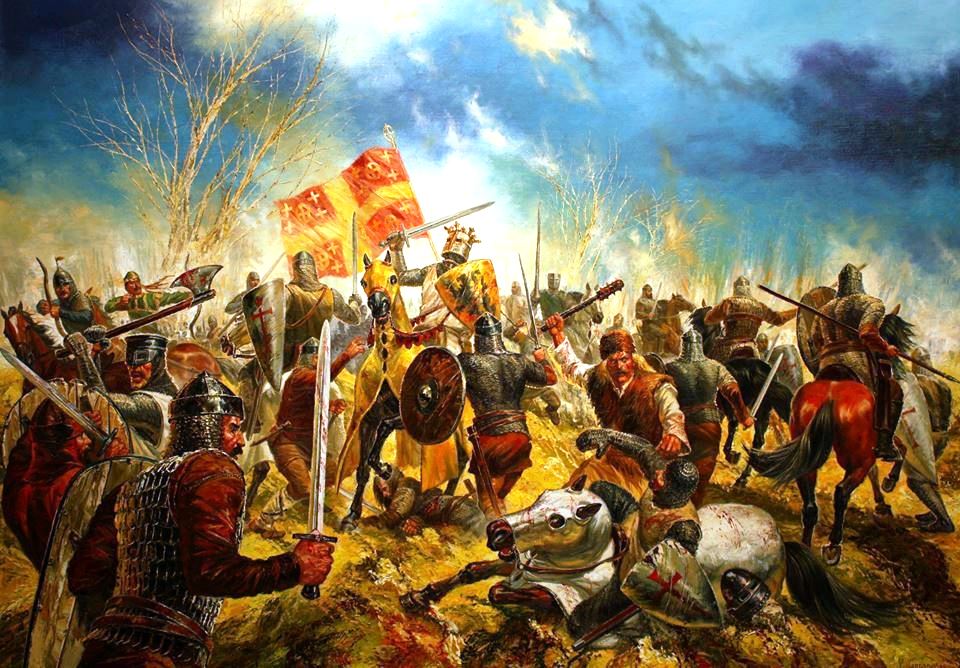Battle of Adrianople (378)
The Battle of Adrianople, fought on August 9, 378 AD, was one of the most devastating defeats suffered by the Roman Empire, marking a turning point in its decline. The battle was the result of a complex chain of events that began when the Visigoths, a confederation of Gothic tribes, were forced across the Danube by the relentless advance of the Huns. Seeking refuge, they were granted permission by the Eastern Roman Emperor Valens to settle within imperial territory, with the expectation that they would serve as a buffer force against future Hunnic incursions. However, the Visigoths quickly found themselves exploited and mistreated by corrupt Roman officials, who extorted them for food, subjected them to degrading treatment and deprived them of the security they had been promised.
Discontent soon turned to open rebellion. The Visigoths, under the leadership of Fritigern, began raiding Roman towns and countryside, gathering strength as disaffected Gothic and non-Gothic groups joined their cause. The rebellion escalated into a direct threat to Constantinople, prompting Valens to march his army to confront them. Confident in his ability to crush what he viewed as an undisciplined barbarian force, Valens rejected offers of negotiation and engaged the Visigoths near Adrianople without waiting for reinforcements from the Western Emperor, Gratian.
What followed was a disaster. The Roman army, exhausted from marching in the summer heat, was ill-prepared for the Visigothic cavalry, which struck with devastating force. The Gothic warriors, far from being disorganised raiders, fought with tactical coordination, using a combination of heavily armed infantry and fast-moving cavalry to envelop and annihilate the Roman legions. Valens himself was either killed in the fighting or perished in a fire after seeking refuge in a nearby building. Two-thirds of the Roman army was destroyed, including much of its senior command structure.
The shock of the defeat threw the Eastern Roman Empire into turmoil. With the empire in crisis, Theodosius, a skilled general who had retired from public life, was recalled and appointed co-emperor. Tasked with stabilising the empire, Theodosius reorganised the military, pursued a combination of diplomacy and military action against the Visigoths, and ultimately secured a settlement with them, allowing them to remain within Roman borders as a semi-independent force. Though this prevented immediate catastrophe, it marked a shift in Roman policy — never again would the empire have full control over the Germanic groups settling within its borders.
The Battle of Adrianople is often seen as the beginning of the events that led to the fall of the Western Roman Empire in the 5th century. It demonstrated the growing vulnerability of Rome's military, the inability of the empire to effectively integrate or control migrating barbarian groups, and the increasing reliance on foreign mercenaries within the Roman army itself. The defeat shattered the illusion of Roman invincibility and signaled the beginning of a new era in which Germanic tribes would play an increasingly dominant role in shaping the future of Europe.
